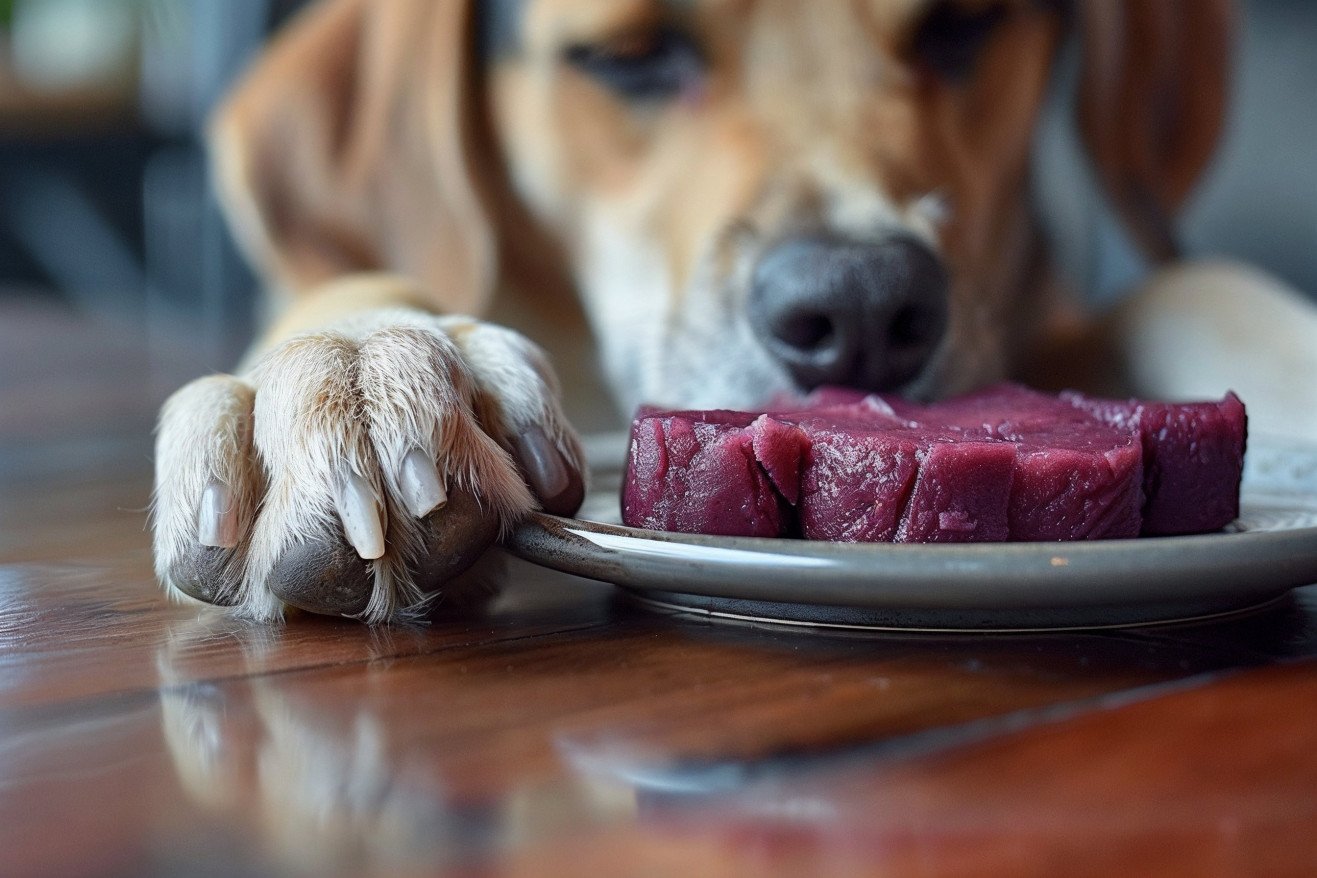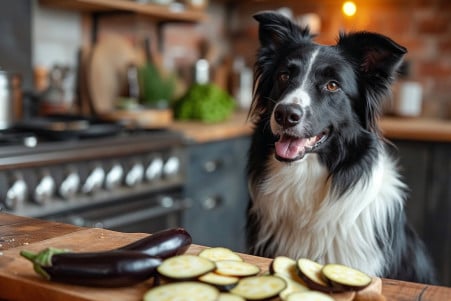Can Dogs Eat Ube? What Pet Owners Need to Know
26 May 2024 • Updated 25 May 2024

Ube is not poisonous to dogs, but there are several things to think about before sharing this vibrant root vegetable with your furry friend. Ube is safe for dogs to eat in small amounts, but it should not be a regular part of their diet. Ube is high in natural sugars and carbohydrates, which can lead to obesity and other health problems in dogs if consumed in large quantities. When feeding ube to dogs, it should be cooked and free of any seasonings or additives that could be toxic.
We'll dig into the most recent information from veterinarians and other experts in pet nutrition to help you figure out how to safely give ube to your dog, including portion sizes and the best ways to prepare it. We'll also cover the potential benefits and risks so you can decide if ube should be an occasional treat or a regular part of your dog's diet. This way, you'll have the information you need to decide if ube is a good choice for your dog.
Can dogs eat ube?
Nutritional Benefits of Ube for Dogs
Ube is a nutrient-rich tuber that can offer several health advantages for dogs if it's included in their diet in moderation. As noted by Hepper, ube is packed with antioxidants, including anthocyanins, which can help fight inflammation and support the immune system. It's also a great source of dietary fiber, which can help with digestive health and constipation.
In addition to antioxidants and fiber, ube is full of vitamins and minerals that can help dogs in a variety of ways. It contains vitamin B6 for the brain, vitamin E for the skin and eyes, and minerals such as potassium that are important for muscle and nerve health. Ube also contains flavonoids, which can help regulate blood sugar.
Despite these benefits, it's important to note that ube is high in carbohydrates and should be used as a treat and not a dietary staple. According to the Queensland government, foods that are high in carbs and have a low glycemic index, like ube, can help control blood sugar levels when they're eaten in moderation. Ube is also low in fat and cholesterol, so it's a healthier choice than many other snacks. By using ube in moderation, you can help your dog get the nutrients they need while also giving them a tasty treat.
Potential Dangers and Considerations of Feeding Ube to Dogs
According to Hepper, ube must be cooked thoroughly before being fed to dogs because raw or undercooked ube can contain toxins that are dangerous to dogs. Ube can also cause digestive upset, including diarrhea and vomiting, because of its high sugar and carbohydrate content. PetMD explains that dogs can develop food allergies to any food, including high-carb foods like ube, so it's important to introduce ube to dogs slowly and in small amounts to make sure they don't have an allergic reaction or sensitivity to it.
Dogs with diabetes or obesity should avoid ube or only eat it in very small amounts because of its high sugar and carbohydrate content, according to the Queensland government. In addition, Dogs Naturally explains that dogs should not eat ube-based dishes or baked goods that contain chocolate, xylitol, or high levels of sugar or butter because these ingredients are toxic to dogs.
How Much Ube Can Dogs Eat?
According to It's About Dog, small dogs can eat a teaspoon or less of cooked ube as an occasional treat, while larger dogs can eat one to two tablespoons of cooked ube as a treat. However, as mentioned by Dogster, ube should always be fed in moderation and in small amounts at first to make sure that dogs don't have any adverse reactions to it.
It's also important to note that ube should only be fed as an occasional treat and not as a regular part of a dog's diet. According to The American Kennel Club, dogs should not get most of their daily calories from carbohydrates like ube. Instead, they should get most of their calories from animal protein, which is an essential part of their daily diet.
How to Safely Prepare Ube for Dogs
Ube must be cooked before being fed to dogs to ensure all toxins are removed, according to Hepper. The skin and any tough or fibrous parts of the ube should be removed before cooking and serving. Hepper recommends boiling, steaming, or baking ube with no seasonings, oils, or other ingredients that are toxic to dogs.
To avoid harmful additives and excessive sugar, pet owners should not feed their dogs ube in desserts, baked goods, or other processed forms, according to the American Kennel Club. Instead, pet owners can feed their dogs plain, cooked ube as a snack or mix it into their dog's food in moderation.
By using these preparation methods, pet owners can safely give their dogs ube as an occasional treat and reduce the likelihood of any potential problems.
Conclusion: How to Safely Add Ube to Your Dog's Diet
Ube can be a nutritious and delicious occasional treat for dogs if it’s prepared and fed correctly. However, it’s important to feed ube in moderation, as overconsumption can lead to weight gain, digestive upset, and other health issues. Always check with your vet before adding any new foods to your dog's diet, especially if your dog has any dietary restrictions or health concerns.
Ube should be cooked thoroughly, and any harmful additives or seasonings should be avoided. If pet parents follow the advice provided in this article, they can safely and responsibly add ube to their dog's diet as a special treat.


